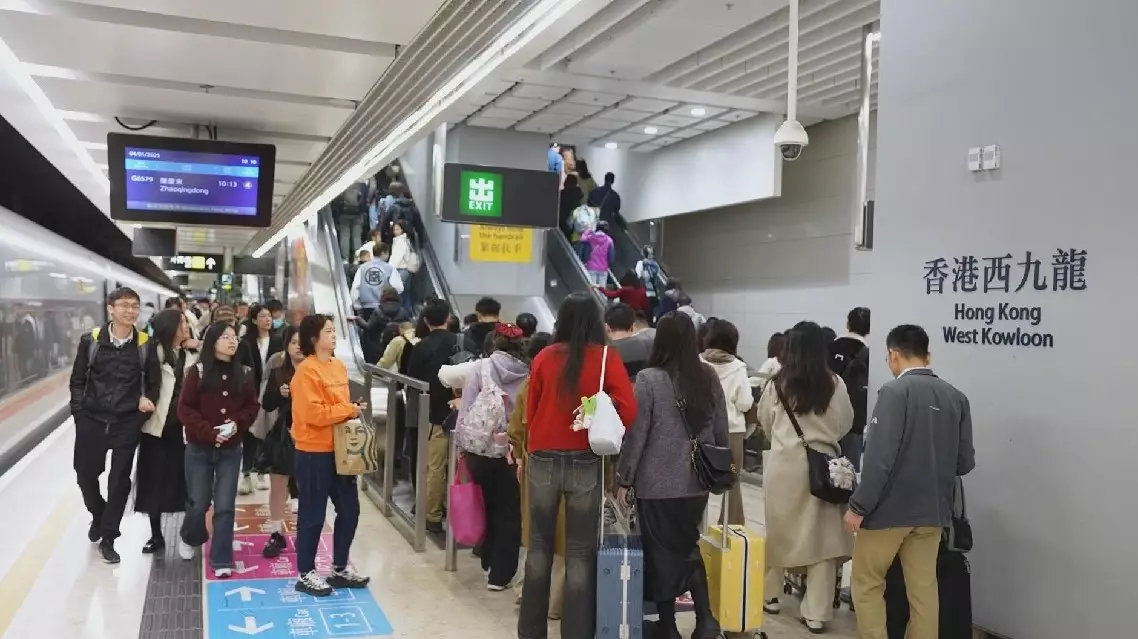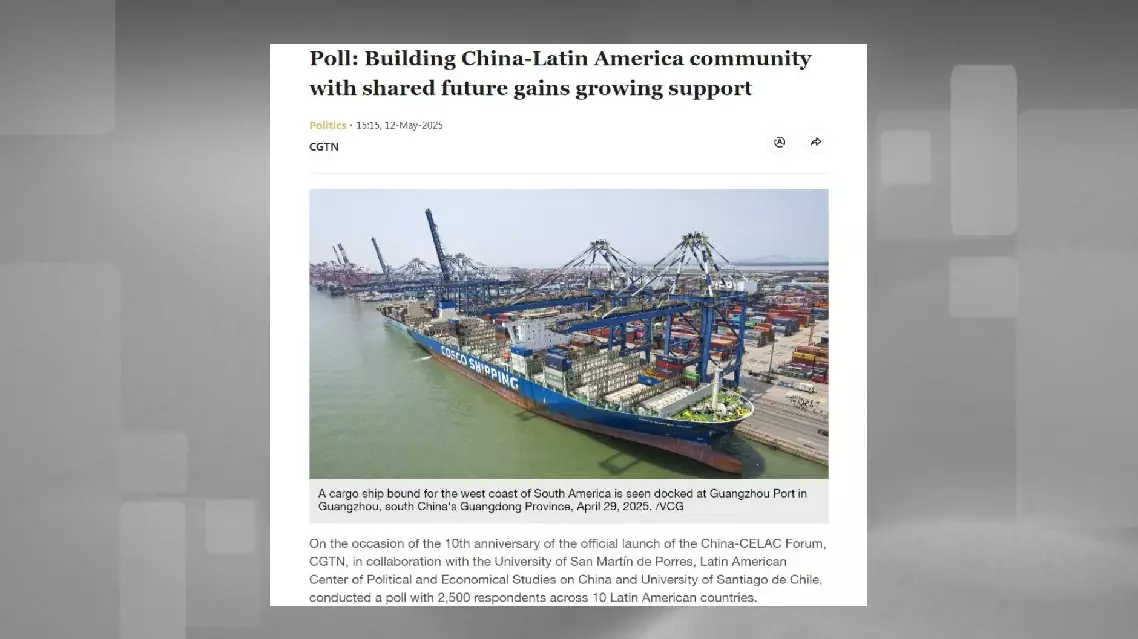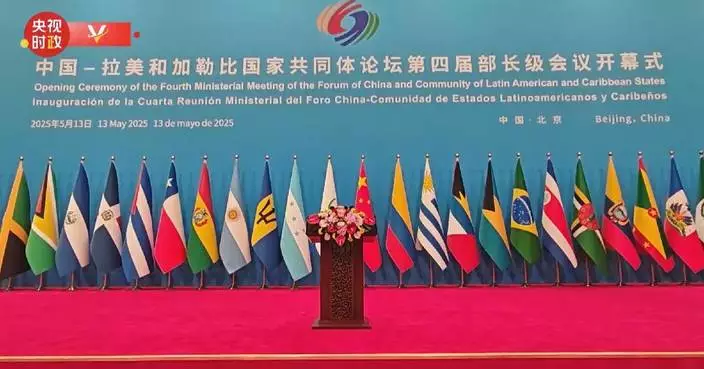Train services between West Kowloon Station in the Hong Kong Special Administrative Region (SAR) and the mainland have been further expanded starting from Sunday, with the number of direct access stations increasing from 80 to 94.
Hong Kong West Kowloon Station on Sunday launched direct train services to Wuhan City of central China's Hubei Province, Xi'an City of northwest China's Shaanxi Province, Jieyang City and Shanwei City of south China's Guangdong Province for the first time, aiming to open up new opportunities for business, cultural exchanges, and tourism development between Hong Kong and the mainland.
"Our home is near Xi'an North Railway Station, and my daughter's home is near West Kowloon Station. With the opening of this train service, it's now much more convenient for us to meet. I'm very happy," said a passenger from Xi'an.
"I'm excited. We're taking this train from Hong Kong to Xi'an. It's the first train, and we arrived at the station very early," said a passenger from Hong Kong.
The trains bound for Hong Kong has been further increased, with the number of electric multiple unit (EMU) trains operating on the Guangzhou-Shenzhen-Hong Kong high-speed railway rising to 242, bringing the total number of trains to 254 under full capacity.
"With the continuous launch of cross-border trains to Hong Kong from various cities in the mainland, the passenger flow at West Kowloon Station has been steadily rising thanks to the favorable customs clearance mode of 'juxtaposed border control,' the new visa-free policy, and other convenience measures. In 2024, nearly 27 million people entered and exited West Kowloon Station, with the maximum daily passenger flow reaching 128,000. It's now common that daily passenger flow exceeds 100,000 during holidays," said Qian Binbin, vice-captain of No. 5 Team at West Kowloon Border Inspection Station.

HK West Kowloon Station expands routes to mainland to enhance cross-border services
The results of a poll released by China Global Television Network (CGTN) on Monday show that building China-Latin America community with shared future has been gaining growing support from the people of Latin America.
On the occasion of the 10th anniversary of the official launch of the China-CELAC (Community of Latin American and Caribbean States) Forum, CGTN, in collaboration with the University of San Martin de Porres, Latin American Center of Political and Economical Studies on China and University of Santiago de Chile, conducted the poll with 2,500 respondents across 10 Latin American countries.
The results of the poll show that respondents strongly agree with the development philosophy and achievements of Chinese modernization and view China-Latin America cooperation positively. The China-Latin America community with a shared future has also gained growing support from the people of Latin America.
China and Latin American countries are all developing nations. The philosophy of Chinese modernization offers a valuable reference for Latin American countries in their pursuit of development.
China is viewed favorably by the majority of respondents, the poll results show. A total of 94.8 percent of respondents see China as a successful country, 85.9 percent find it attractive and 94.8 percent recognize China's strong economic power. In addition, 95.6 percent of the surveyed respondents recognize China's technological strength, and 82.9 percent believe the country's development model is of reference value to Latin America.
In recent years, more Latin American countries have chosen to establish or resume diplomatic ties with China. The poll results show that 86.2 percent of respondents have a favorable view of China and 87.7 percent expressed a favorable view of the Chinese people. The same percentage hold a favorable opinion of Chinese companies investing and operating in Latin America.
In the five countries that have recently established or resumed diplomatic relations with China -- The Dominican Republic, Panama, Honduras, El Salvador, and Nicaragua, the respondents expressed even stronger goodwill toward China, with an average favorability rate exceeding 90 percent.
Young people are full of vitality and dreams. The respondents aged 18 to 34 expressed significantly higher favorability toward China compared to other age groups.
Among them, those aged 25 to 34 have the highest favorability toward China (92.2 percent), followed by those aged 18 to 24 at 87.7 percent. Additionally, 87.2 percent of Latin American respondents acknowledge China's cultural influence, with 91.9 percent of respondents aged 18 to 24 and 89 percent of those aged 25 to 34 agreeing holding this view. Moreover, 88.1 percent of Latin American respondents positively assess China's contribution to human civilization.
Among respondents aged 18 to 34, the proportion of those who frequently or always engage with Chinese culture and entertainment products is 13.7 percentage points higher than that of those aged 35 or older. Nearly half (49.2 percent) of Latin American respondents believe that exposure to Chinese popular culture has effectively enhanced their understanding of China.
As a key driver of China-Latin America cooperation, the Belt and Road Initiative's (BRI) influence in Latin American countries is steadily growing, and respondents' understanding of the initiative is becoming increasingly rational.
In the description of the BRI, the top three points of agreement are: "a development model that countries can adopt to improve economic prosperity" (55 percent), "an important public good provided by China for improving international governance" (54 percent), and "China's vision for cooperation with other countries" (52.6 percent).
Additionally, 80.4 percent of respondents believe the BRI has a positive impact on the development of Latin American countries; 81.1 percent agree with the "consultation, contribution, and shared benefits" principle upheld by the initiative; 82.1 percent view it as an important contribution by China to the world; and 80.9 percent feel that it helps establish a more equitable international order.
According to the poll results, 86.5 percent of respondents believe economic cooperation with China has been mutually beneficial and 90 percent agree that Chinese investment has effectively boosted local economic development.
Regarding China-Latin America relations, 81.8 percent of respondents believe the current relationship is progressing positively; 93.8 percent consider maintaining strong ties with China vital to their country; and 89 percent express optimism about the future of bilateral relations.
The poll covered ten countries: Brazil, Mexico, Argentina, Chile, Peru, Honduras, Panama, Nicaragua, El Salvador, and the Dominican Republic. Respondents were members of the general public aged 18 to 55 and older, with sampling aligned with each country's census-based age and gender distribution.
The poll results were made public one day before the fourth ministerial meeting of the China-CELAC Forum opened in Beijing.
CELAC, launched in 2010, is an intergovernmental mechanism for dialogue and political agreement, which includes all 33 Latin American and Caribbean countries in the region.

Poll: Building China-Latin America community with shared future gains growing support























































